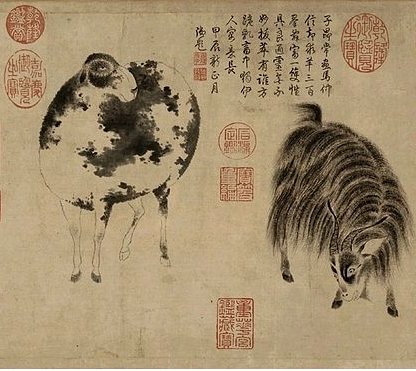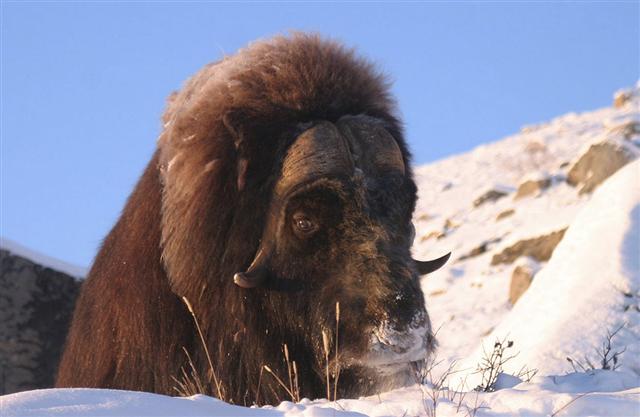Although I easily recognized summer and winter in this Chinese picture (without having any clue as to what the text says) there has always been something peculiar in the opposition between Sheep and Goat.
Long hair is necessary when it is cold, but on Easter Island where mammal species were scarce they may instead have called attention to the abundance of feathers on their poultry in winter. ... In north Asia the common mode of reckoning is in half-year, which are not to be regarded as such but form each one separately the highest unit of time: our informants term them 'winter year' and 'summer year'. Among the Tunguses the former comprises 6½ months, the latter 5, but the year is said to have 13 months; in Kamchatka each contains six months, the winter year beginning in November, the summer year in May; the Gilyaks on the other hand give five months to summer and seven to winter. The Yeneseisk Ostiaks reckon and name only the seven winter months, and not the summer months. This mode of reckoning seems to be a peculiarity of the far north: the Icelanders reckoned in misseri, half-years, not in whole years, and the rune-staves divide the year into a summer and a winter half, beginning on April 14 and October 14 respectively. But in Germany too, when it was desired to denote the whole year, the combined phrase 'winter and summer' was employed, or else equivalent concrete expressions such as 'in bareness and in leaf', 'in straw and in grass' ... In summer there was an abundance of leaves (rau), which could have served as a Sign: ... The canoes of Ava Rei Pua and of Hotu were seen near the (off-shore) islets. On the fifteenth day of the month of October (tangaroa uri) the canoe of Hotu and the canoe of Ava Rei Pua landed. On the fifteenth day of the month of October (tangaroa uri), Nonoma left the house during the night to urinate outside. At this point Ira called out to Nonoma, 'Look at the canoe!' Nonoma ran, he quickly went to Te Hikinga Heru (a ravine in the side of the crater Rano Kau) and looked around. There he saw the double canoe way out near the (offshore) islets, and the two (hulls of the canoe) were lashed together. He ran and returned to the front of the house. He arrived and called into the house: 'Hey you! This canoe has arrived during the night without our noticing it!' Ira asked Nonoma, 'Where is the canoe, which you say is lying out there (in the water)?' Nonoma's voice came back: 'It is out there (in the water) close to the (offshore) islets! There it lies, and the two (hulls) are lashed together.' The four of them (corrected for 'the six of them') went out and picked up leaves (on branches) to give signals. They picked them up, went and arrived at Te Hikinga and saw the canoe. Raparenga got up, picked up the leaves, took them in his hands, and waved, waved, waved, waved ... In summer the Sun is high up (high summer) - held high like the head of the sheep in the picture above - in winter the Sun head is low down like that of the goat in the Chinese illustration. Winter associates to rain "winter, fourth season of the year; used typically for year ... prob. f. nasalized var. of IE. base *wed- *wod- be wet ..." (English Etymology) and the long fur of the goat is hanging down as if it was visualizing falling rain. However, the sheep and the goat are not as far apart as opposites should be. This was a kind of mystery which had not been solved. Until yesterday, when I learned that the species most closely related to the muskox was the goat. Then I was satisfied.
|

